|
No more cellophane and duct tape, the Amscope
dry dark field condenser has arrived! This specialized condenser
has specially shaped optics and a built in dark mask to produce
usable dark fields up to 600x. Im getting like 100x the contrast
than the home made mask I made before. The condenser was not
made to fit my microscope, so I designed and printed up a 3D
adapter to make for a perfect fit to our microscope.
For this set of
images, I collected about a half a teaspoon of lake water from
the pond at the top of the waterfall. Algae was yellow green
and growing well in this winter month. The fauna was surprisingly
different than the summer mix. Some very strange colonial cone
shaped organisms were found and loads of swimming diatoms were
in abundance.
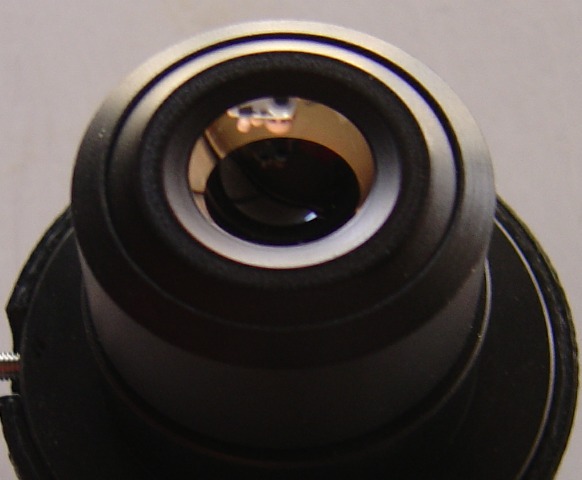
Above: Close up
of the projection end of the Dark Field condenser. A bowl like
concave lens is at top, with a dark internal black stop. The
subjects are illuminated by a bright ring emerging from the edges
of the lens where the glass is exposed. So the microscope sees
a black disk - the subject sees a massively bright ring of light.
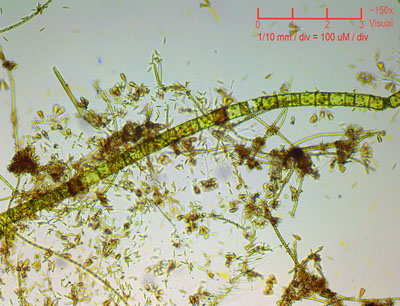 |
First
a 150x transmission light image, showing the algal strands, hordes
of tiny spindle shaped diatoms, and some of the cone shaped animals. |
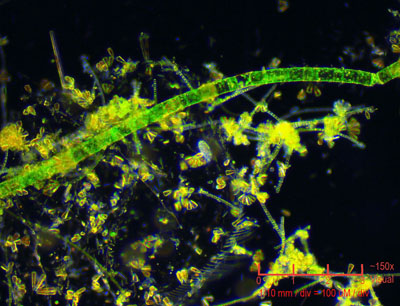 |
Same
field with the new dark field condenser. The colors are true
and brilliant, and invisible features appear across the field.
The algae is gorgeous. |
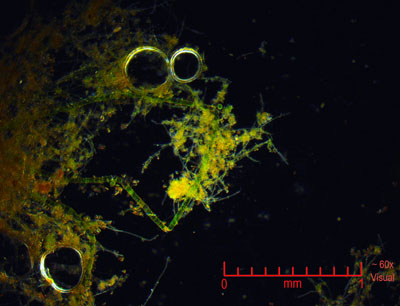 |
60x
dark field view for comparison. A few bubbles are seen under
the cover slip too. |
 |
At
150x, the colonial cones are attached to the algae strands. A
smaller species of algae can also be seen here, showing as well
the tiny individual cells. |
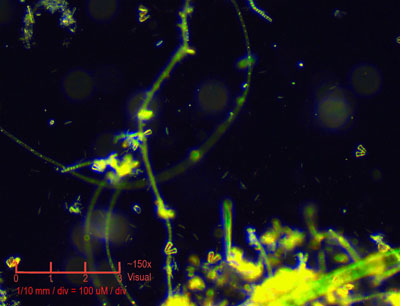 |
Cones
and diatoms at 150x. |
 |
It
was exciting to see that the new condenser worked with the 40x
objective as well. My old duct tape special NEVER worked at this
magnification - about 600x equivalent. Note the spindle shaped
diatoms swimming about. They move slow and seem to have no brains
under control. They ram each other and can only go one way. |
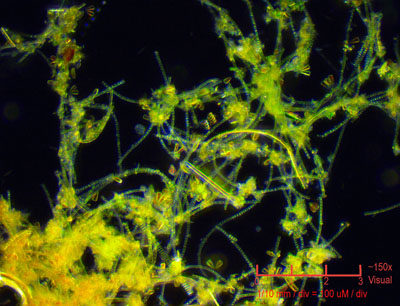 |
150x
view showing different types of algae found. Note to the left
of center there is some type of spherical animal that looks like
a planet... |
 |
150x
view of one of the larger algae strands. The colors in dark field
are outrageous. Note how the colonial cones are in radial groups
along the strand. No hint of the ribs on them at this power.. |
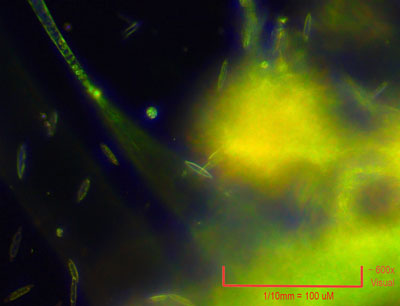 |
600x
- swimming diatoms. They look like little torpedoes paddling
about, their skeletons are composed of pure silica. |
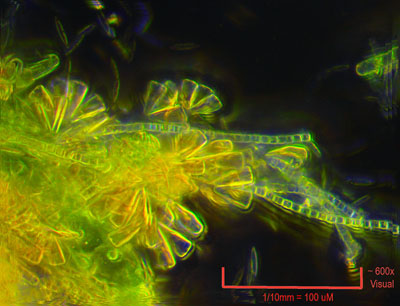 |
600x
- Cones in colonies. Just a hint now at the ribs along their
sides. The smaller algae strands now show good details. |
 |
Lets
not forget the big algae strand! At 600x, now we can see amazing
internal details. These features were not visible with transmitted
light. |
 |
Cone
groups at 600x. The "mass" of yellow on the right is
a big ball of diatoms all glommed together. They did not move,
therefore it seems that these were empty tests. |
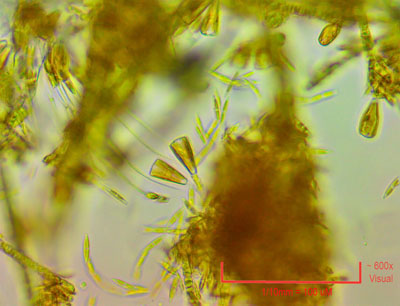 |
Same
view at 600x in transmitted light. You can really see the difference
between this and dark field above. |
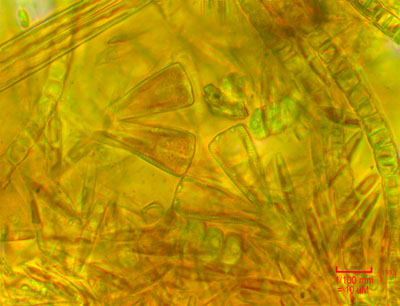 |
The view
with the 100x objective with oil immersion has to be done in
transmitted light. The dark field condenser is for dry objectives.
(They actually do sell an oil dark field condenser but you have
to put oil on both sides of the slide)
The ribs on the
cones are quite easy to see now here at 1600x.
|
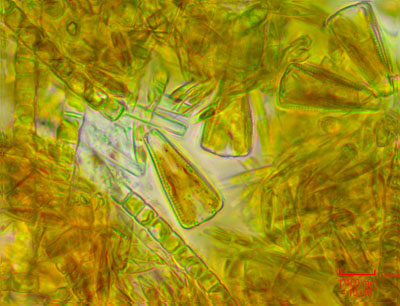 |
Another
set of cones with ribs. Hordes of dead diatoms are on the right. |
|
Darkfield condenser in my 3D printed adapter! Updated: 1/27/19
Camera: 10 Megapixel CMOS Platform: AmScope Trinocular 2000x Filters: dark field Location: Payson,Az Processing: Photoshop CS Pro HOME















